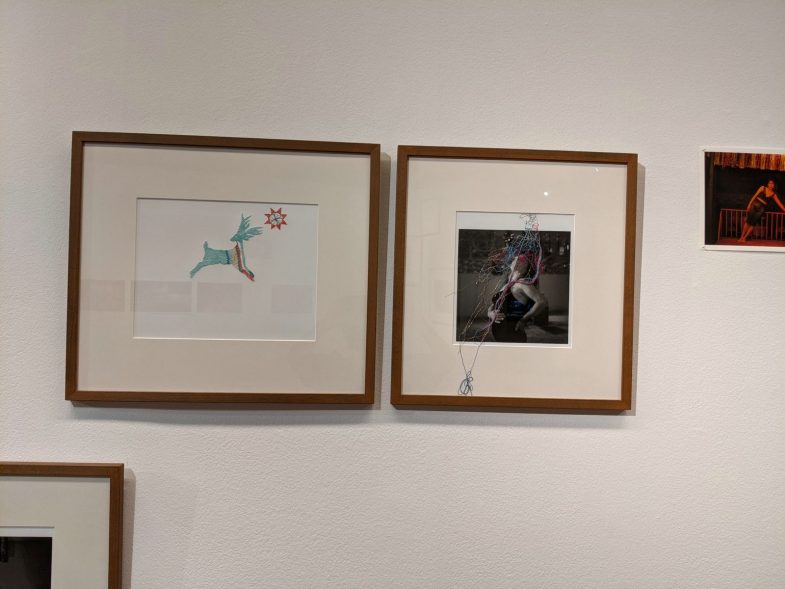

























After the pieces Lección de mambo (2017), Quiero bailar como Tongolele (2018), the workshops that have taken place in the galeries where the piece was exhibited ( Cultural Center of Spain in Mexico, or the Fotovisión photography festivals in Querétaro and San Luis Potosí, all in Mexico).and mujer platillo 2020, in which a group of women who work as ficheras in the Barba Azul cabaret in Mexico City attend master classes at the National Autonomous University of Mexico (UNAM) to receive a ceramics workshop. These works precede this series; Mujer Pájara
After the closing of the dance halls, the classes were suspended, as well as any project in which I incited to the meeting or research from actions in common.
Under these new circumstances and from my home, I had time to review the enlargements of dozens of photographs I took at Barba Azul cabaret, since 2017. Photographs I had discarded and damaged copies. I began to stitch Otomi designs on them. These designs, also called Tenangos after the mountain range where the Otomí people live, in the State of Hidalgo, are traditional embroidery patterns, and are part of Mexican popular visual culture. I embroidered turtles, roosters, deer, birds, stars and plants on black and white images of bodies. And then I began to embroider the hidden side of the photograph. The back of the paper shows the design, but on the image you can only see a mottling of green, orange, blue, red and yellow threads. When someone leaves the Sierra Otomí to live elsewhere, he always takes a tenango with him. So too, as he moves, he keeps a piece of his village. In these intervened photographs, you either see the body or you see the design. But, like those little nineteenth-century animated discs that showed a bird on one side and a cage on the other, you can see both at once if you move fast enough.
